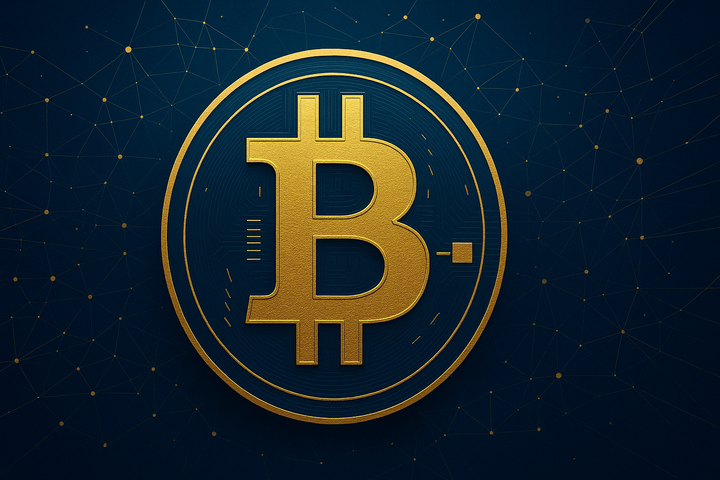Paper Bitcoin Risks, Proof-of-Reserves, and Treasury Strategy Pitfalls
The August 09, 2025 episode of Simply Bitcoin IRL features CJ Konstantinos explaining how institutional futures shorting creates “paper Bitcoin” that can dampen spot market gains, and why proof-of-reserves is essential to protect market integrity.

- My 'briefing notes' summarize the content of podcast episodes; they do not reflect my own views.
- They contain (1) a summary of podcast content, (2) potential information gaps, and (3) some speculative views on wider Bitcoin implications.
- Pay attention to broadcast dates (I often summarize older episodes)
- Some episodes I summarize may be sponsored: don't trust, verify, if the information you are looking for is to be used for decision-making.
Summary
The August 09, 2025 episode of the Simply Bitcoin podcast features CJ Konstantinos explaining how institutional futures shorting creates “paper Bitcoin” that can dampen spot market gains, why proof-of-reserves is essential to protect market integrity, and how cheap-debt treasury strategies can both strengthen and endanger corporate balance sheets. He warns that copycat firms without robust financing may face forced liquidation and stresses the industry’s need to reject fiat-style fractional reserves. Konstantinos also highlights Bitcoin’s fair value at $320,000 and predicts new adoption waves when its price surpasses median home values.
Take-Home Messages
- Derivatives Market Pressure: Institutional futures shorting can offset spot market buying, muting expected price gains.
- Transparency Imperative: Proof-of-reserves should be industry standard to prevent unbacked claims on Bitcoin holdings.
- Leverage Hazards: Cheap-debt treasury strategies can self-repay if well-managed but risk insolvency for poorly structured copycats.
- System Design Choice: Avoiding fiat-style fractional reserves is crucial to preserving Bitcoin’s free-market ethos.
- Valuation Milestones: Surpassing median home values could trigger significant retail adoption from home-equity reallocation.
Overview
CJ Konstantinos begins by examining why Bitcoin’s price has not surged despite heavy accumulation from corporate treasuries and sovereign buyers. He attributes the muted reaction to institutional futures and options trading that enables yield harvesting via synthetic short positions, reducing upward pressure. While these instruments can serve legitimate hedging purposes, he cautions that unbacked “paper Bitcoin” could erode market trust without robust proof-of-reserves.
He discusses the mechanics of corporate treasury strategies that use low-interest debt to acquire Bitcoin as a long-term asset. When debt costs remain below inflation and Bitcoin’s growth outpaces liabilities, the strategy can function as self-repaying. However, Konstantinos warns that companies imitating this model without favorable financing or operational discipline risk collapse during market volatility.
The conversation shifts to Bitcoin’s monetization and financialization, which Konstantinos sees as inevitable but warns must not replicate fiat-style fractional reserve practices. He argues for preserving Bitcoin’s free-market rate formation rather than importing centralized rate-setting mechanisms from legacy finance. This choice will determine whether Bitcoin’s financial infrastructure diverges meaningfully from traditional banking systems.
Konstantinos highlights his calculated Bitcoin “fair value” of $320,000, based on all-in production costs and network metrics. He notes that no bull market has historically ended below fair value and anticipates a demand surge when Bitcoin’s price overtakes the median single-family home value. Political advocacy, potentially through a dedicated “Orange Party,” is framed as necessary to safeguard Bitcoin’s principles against adverse regulation.
Stakeholder Perspectives
- Corporate Treasurers: Interested in leveraging Bitcoin for long-term value growth but wary of liquidity and leverage risks.
- Institutional Traders: Use derivatives to generate yield, influencing price dynamics and liquidity.
- Regulators: Focused on systemic risks from unbacked Bitcoin claims and opaque custodial practices.
- Retail Investors: Dependent on transparent proof-of-reserves to trust market integrity.
- Policy Advocates: Seek to mobilize political engagement to preserve Bitcoin’s decentralized, market-driven design.
Implications and Future Outlook
If proof-of-reserves becomes widely adopted, market confidence in custodial Bitcoin holdings could strengthen, deterring systemic risks from unbacked claims. Without such transparency, the proliferation of “paper Bitcoin” could distort price discovery and undermine long-term adoption. The choice to enforce these standards will determine how resilient the market is to both internal malpractice and external shocks.
Corporate treasury strategies built on cheap debt can provide powerful balance-sheet growth if managed prudently. Yet, in volatile conditions, copycat firms without deep financing channels could trigger forced liquidations, compounding market stress. Clearer guidelines and risk management frameworks will be needed as more companies pursue Bitcoin-backed financing.
Surpassing major psychological thresholds, such as the median home price, could create new retail adoption waves via home-equity-to-Bitcoin reallocation. This shift would inject substantial liquidity but also concentrate risk if poorly timed or over-leveraged. Managing this transition responsibly will require a blend of market education, political advocacy, and infrastructure readiness.
Some Key Information Gaps
- What frameworks can standardize proof-of-reserves across major custodians? Establishing uniform standards would enhance transparency and trust in Bitcoin markets.
- Under what market conditions does cheap debt remain a viable tool for Bitcoin treasury accumulation? Understanding these parameters can guide sustainable corporate adoption.
- What safeguards can prevent Bitcoin financialization from replicating fiat fractional reserve risks? Identifying protective mechanisms will preserve Bitcoin’s free-market characteristics.
- What coordinated lobbying strategies could protect Bitcoin from hostile legislative action? Targeted political engagement is crucial to maintaining favorable regulatory environments.
- What financial products could facilitate homeowners’ conversion of equity into Bitcoin? Innovative tools could expand adoption while managing systemic and household-level risk.
Broader Implications for Bitcoin
Proof-Based Market Standards
The push for proof-of-reserves reflects a wider shift toward verification-driven finance, where trust is established through publicly auditable records. If adopted across asset classes, this could extend beyond Bitcoin to reshape custodial practices in gold, commodities, and even fiat-denominated securities. Such a move would pressure legacy institutions to adopt similar transparency measures or risk losing market share to more open systems.
Decentralized Interest Rate Formation
Rejecting fiat-style fractional reserve models opens the path for organically set, market-driven borrowing costs in Bitcoin finance. This could lead to more resilient credit markets insulated from centralized policy swings, especially in emerging economies seeking alternatives to dollar or euro credit benchmarks. Over time, it may also influence how global capital allocates across decentralized finance and traditional markets.
Real Asset Benchmarking
When Bitcoin’s price surpasses that of major real-world benchmarks like median home values, it could alter perceptions of wealth storage and capital allocation. Such shifts might encourage a broader class of asset holders to diversify into Bitcoin, changing liquidity patterns in housing and mortgage markets. This dynamic could trigger policy debates about capital controls, taxation, and the stability of domestic real estate sectors.
Political Mobilization for Monetary Reform
Calls for an “Orange Party” indicate Bitcoin’s potential to catalyze new political movements centered on monetary sovereignty and financial freedom. Similar movements could emerge globally, leveraging Bitcoin advocacy to push for broader reforms in banking, taxation, and asset rights. These coalitions might increasingly influence legislative agendas, especially where economic disenchantment is already high.



Comments ()